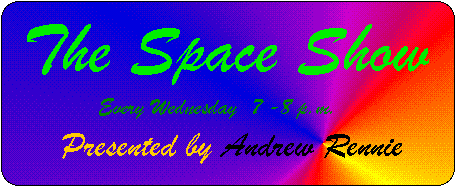

| BROADCAST DATE | LECTURER | TOPIC |
|---|---|---|
| January 15 | Mark McCaughrean Senior Scientific Advisor European Space Agency | How Rosetta travelled from Earth and its period of hibernation. (Courtesy ESA) |
| January 15 | Paolo Ferris Head Mission Operations European Space Agency | How Rosetta will be revived on 2014 January 20 at 10 a.m. UTC (9 p.m. AEDT) and how the comet probe has been tracked during its ten year mission. (Courtesy ESA) |
| January 15 | Marcus Bauer Public Affairs European Space Agency | A run through of the dates on which Rosetta missions events will occur, and of the ESA public outreach activities associated with the mission. (Courtesy ESA) |
| January 29 | Guy Webster Public Affairs Jet Propulsion Laboratory Pasadena California Michael Meyer Ray Arvidson John Callas Steve Squyres | MER Ten Year Science Briefing. A summary of Spirit and Opportunity's decade on Mars, and presentation of new findings about past water on Mars. (Courtesy JPL) |
| February 5 | Barbara Mikulski United States Senator Maryland | The funding of the James Webb Space Telescope and her support of NASA projects. (Courtesy GSFC) |
| February 5 | Bruno Zielke Member Astronomical Society of Victoria Melbourne | The seconds of the Big Bang. (Recorded at Victorian Astronomy Conference) Listen or download (18 min 45 s - 17.5 MB) |
| February 19 | Paul Mahaffy Chief Planetary Environments Laboratory Solar System Exploration Division Goddard Space Flight Center Greenbelt Maryland | The objectives of the Maven mission to Mars. (Courtesy GSFC> |
| March 5 | Art Azarbarzin Project Manager Global Precipitation Measurement Goddard Space Flight Center Greenbelt Maryland Michael Freilich | Comments following the successful launch of the Global Precipitation Measurement satellite, describing the post launch events on the satellite, the task of the satellite and the historical link back to President Kennedy. (Courtesy JAXA/NASA) |
| March 5 | Douglas Hudgins Scientist Exoplanet Exploration Program Astrophysics Division NASA HQ Washington, D.C. Jack Lissauer Jason Rowe Sara Seager | Announcement by the Kepler team of the discovery of hundreds of new exoplanets. (Courtesy NASA) |
| March 12 | Douglas Hudgins Scientist Exoplanet Exploration Program Astrophysics Division NASA HQ | The stutus of the proposed Kepler K2 mission, which would use two gyroscopes and solar wind to stabilise the spacecraft enough to permit continued planet hunting operations. (Courtesy NASA) |
| March 19 | Jack Lissauer Planetary Scietist SETI Institute Ames Research Center Moffett Field California | What would be needed to detect atmospheres around exoplanets. (Courtesy NASA) |
| April 9 | Paul Hertz Director Astrophysics Division NASA HQ Washington, D.C. Fiona Harrison Brian Grefenstette Robert Kirshner | New findings about supernovae have been made by scientists analysing data from the NuSTAR (Nuclear Spectroscopic Telescope Array) satellite. |
| Douglas Hudgins Scientist Exoplanet Exploration Program NASA HQ Washington, D.C. Elisa Quintana Tom Barclay Victoria Meadows | The first discovery of an Earth-sized planet in the habitable zone of a star. | |
| June 18 | Perry Vlahos Mount Burnett Observatory The Dandenongs | The genesis of the observatory as an outpost of Monash University; the decision to refurbish and use the observatory; how that was done; and public events. Located at 430 Tavenoska Road, Mount Burnett (between Cockatoo and Gembrook.) Listen or download (15 min 44 s - 14.3 MB) |
| June 25 | David Crisp Senior Research Scientist and Atmospheric Physicist Leader OCO 2 Science Team Jet Propulsion Laboratory Pasadena California | Historical atmospheric carbon dioxide records, sources and sinks of CO2, satellite missions, the demise of OCO 1 and the funding of the reflight, how satellites measure atmospheric carbon and future satellites. (Courtesy JPL) |
| July 2 | Alvaro Giménez Director Science and Robotic Exploration European Space Agency | The mystery of comets and their link to the origin of the solar system, the story of the Rosetta stone as an inspiration of the Rosetta mission to Comet Gerasimenko-Churyumov, the science to be done by Rosetta and future ESA science missions. (Courtesy ESA) |
| July 2 | Johann-Dietrich Wörner Chairman DLR (German Aerospace Centre) | The German contribution to the Rosetta mission. The relevance of pure scientific research. The origin of the name Philae for Rosetta's lander. Practical uses on Earth of the mission's sensors. (Courtesy ESA) |
| August 13 | Michael Meyer Lead Scientist Mars Exploration Program NASA HQ Washington, D.C. Ellen Stofan | The Mars 2020 Mars Rover Mission. It will be similar to Curiosity with new instruments that have overlap and complimentarity, based on a report from the Scienc Definition Team. (Courtesy NASA HQ) |
| August 20 | David Jamieson Professor Scool of Physics Melbourne University Parkville Melbourne | A description of Mars; space missions to the red planet; Gale Crater (where the Curiosity rover landed); the changes in planetary atmospheres caused by life; the origins of life; Viking's search for life; mapping Mars and evidence for ancient oceans and shorelines. (Recorded at Victoria Astronomy Convention, Preston) Listen or download (32 min 35 s - 29.7 MB) Listen or download (5 min 0 s - 4.5 MB) |
| August 20 | Sam Gulkis Principal Investigator MIRO Jet Propulsion Laboratory Pasadena California | How the MIRO is effectively a small radio telescope aboard Rosetta, and how it is being used to detect molecules in the coma and nucleus of Comet 67P/Churyumov-Gerasimenko. The comet is releasing 300 grams of water per second, an amount that is expected to increase by over a hundred-fold by perihelion. (Courtesy ESOC) |
| August 27 | David Jamieson Professor Scool of Physics Melbourne University Parkville Melbourne | The physics of the Curiosity Mars Science Laboratory rover and responses to audience questions. (Recorded at Victoria Astronomy Convention, Preston) Listen or download part 1 (24 min 40 s - 22.5 MB) Listen or download part 2 (8 min 28 s - 7.7 MB) |
| September 3 | Jim Green Director Planetary Science Division NASA HQ Washington, D.C. Ed Stone Alan Stern | On the 25th anniversary of the Voyager 2 encounter with Neptune and Triton the New Horizons spacecraft crossed the orbit of Neptune enroute to Pluto and the Kuiper Belt, this discussion looked back at Voyager 2 and forward to next year's Pluto flyby. (Courtesy NASA HQ) |
| September 10 | David Greenspoon Senior Scientist Planetary Science Institute John Spencer Jeff Moore Bonnie Burati Fran Bagenal | A discussion between members of the Voyager and New Horizons science teams about what Voyager 2 found during its flyby of Neptune and Triton and what New Horizons will be looking for in next year's flyby of Pluto and Charon. (Courtesy NASA HQ) |
| September 10 | David Greenspoon Senior Scientist Planetary Science Institute John Spencer Jeff Moore Bonnie Burati Fran Bagenal | Part two of a discussion between members of the Voyager and New Horizons science teams about what Voyager 2 found during its flyby of Neptune and Triton and what New Horizons will be looking for in next year's flyby of Pluto and Charon. (Courtesy NASA HQ) |
| September 17 | Charlie Bolden Administrator NASA Washington, D.C. | Remarks on the opening of the Vertical Asembly Facility in Michoud, Mississippi. Inluded an update status on the Orion and Space Launch System projects. |
| October 1 | Robert Cabana Director Kennedy Space Center Florida Charles Bolden Cathy Leaders | From the Kennedy Space Center the announcement that Boeing and Space-X have been selected to provide commercial crew services to NASA. (Courtesy KSC) |
| October 1 | Jim Green Director Planetary Science Division NASA HQ Washington D.C. Lisa May Bruce Jakowsky David Mitchell | The Maven mission and its insertion into orbit about Mars. (Courtesy NASA) |
| October 22 | Kelly Fast Program Scientist Planetary Science Division NASA HQ Washington, D.C. | Observations to be made of Comet Siding Spring by NASA spacecraft orbiting and on the surface of Mars. |
| December 3 | Guillermo Lemarchand Physicist University of Buenos Aires Buenos Aires | Our place in the universe and the problems of searching for extraterrestrial intelligence. (Recorded at Space Association of Australia) Listen or download (11 min 14 s - 10.3 MB) |
| December 17 | Peter Jakab Associate Director Air and Space Museum Washington, D.C. | How one of the Viking Landers was used to send a Museum ribbon cutting signal from Mars, and the curatorial role of the National Air and Space Museum for objects, be they on Earth or somewhere in space. |
